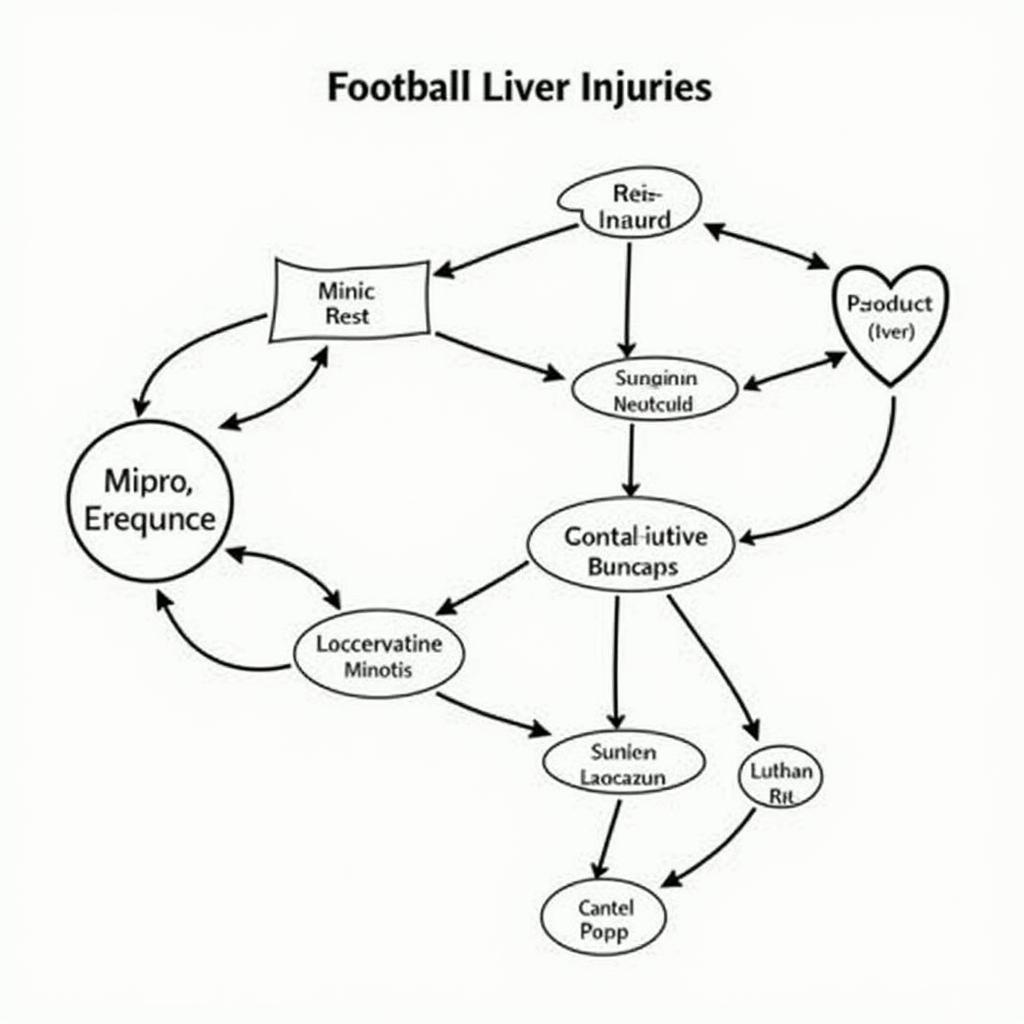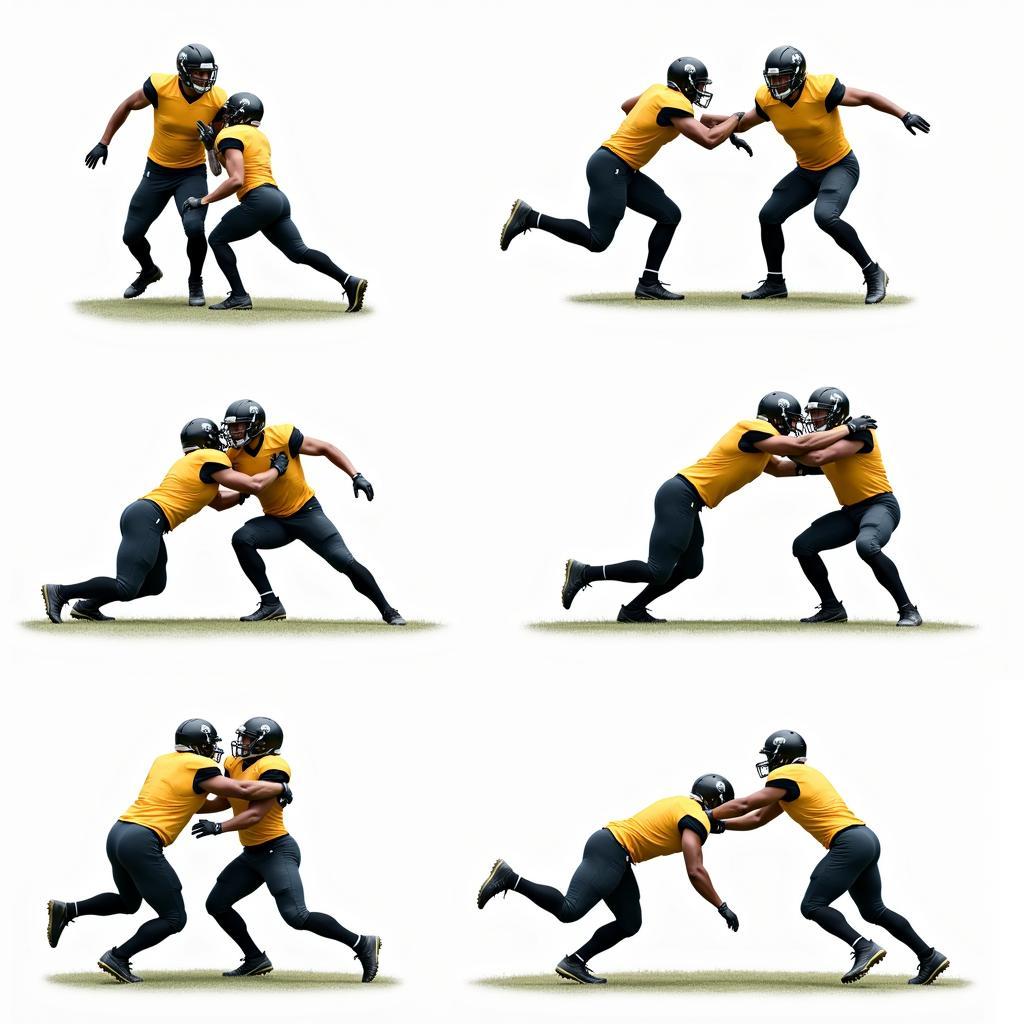Football, a sport celebrated for its intensity and physical demands, carries inherent risks of injury. Among these, a Football Liver Injury, though relatively rare, presents a serious concern. This article explores the causes, symptoms, diagnosis, treatment, and recovery process associated with liver injuries in football. We’ll delve into the mechanisms of these injuries, the importance of prompt medical attention, and the long-term implications for players.
One common misconception is that only high-impact collisions cause liver injuries. While forceful tackles certainly contribute, even seemingly minor blows can, under specific circumstances, result in damage. Understanding the anatomy of the liver, its location within the abdominal cavity, and its susceptibility to certain types of force is crucial to grasping the nature of these injuries. For example, a sudden deceleration or a direct blow to the right upper quadrant can compress the liver against the rib cage, leading to lacerations or contusions. We will also explore specific incidents, like the colorado football liver injury, to illustrate these points. You can find more information about Colorado football player lacerated liver incidents here: colorado football player lacerated liver.
Types and Severity of Football Liver Injuries
Liver injuries in football can range from minor contusions (bruises) to severe lacerations (tears) and even rupture. The severity dictates the course of treatment and recovery.
- Contusions: These are the most common type of liver injury in football, often resulting from blunt force trauma. Symptoms can include pain in the right upper quadrant, tenderness to the touch, and bruising.
- Lacerations: More serious than contusions, lacerations involve a tear in the liver tissue. Bleeding is a significant concern, and symptoms can include severe abdominal pain, signs of shock, and internal bleeding.
- Rupture: A ruptured liver is a life-threatening emergency requiring immediate surgical intervention. This catastrophic injury can cause massive internal bleeding and rapid deterioration.
Diagnosing a Football Liver Injury
Rapid and accurate diagnosis is crucial for effective management of a football liver injury. The process typically involves a physical examination, imaging studies, and laboratory tests. The physician will assess the patient’s abdominal tenderness, signs of internal bleeding, and overall condition. Imaging techniques like CT scans and ultrasound play a vital role in visualizing the extent of the damage. Learn more about the specifics of liver lacerations in football here: liver laceration football.
Treatment and Recovery from a Football Liver Injury
Treatment for a football liver injury varies depending on the severity. Minor contusions often require conservative management, including rest, pain control, and close monitoring. More severe injuries, such as lacerations or rupture, necessitate hospitalization and may require surgical intervention to control bleeding and repair the damage. The recovery period can range from weeks to months, depending on the severity of the injury and the individual’s healing process. The athlete must adhere to strict medical guidelines and undergo regular follow-up appointments to ensure optimal recovery. Further details about a specific incident can be found here: colorado football liver injury.
 Treatment Options for Football Liver Injury
Treatment Options for Football Liver Injury
Preventing Football Liver Injuries
While the inherent physicality of football makes injuries unavoidable, certain preventative measures can minimize the risk of liver injuries. Proper tackling techniques, protective equipment, and adherence to safety guidelines are paramount. Strengthening core muscles can also provide added protection to internal organs.
How can core strengthening help prevent football liver injuries?
Strengthening core muscles provides stability and support to the abdominal region, offering a degree of protection to the internal organs, including the liver.
Long-Term Implications of a Football Liver Injury
Most athletes recover fully from liver injuries with appropriate medical care. However, severe injuries can have long-term consequences, including increased susceptibility to future injuries and potential complications like blood clots or infections.
“A football liver injury, though uncommon, can have serious consequences,” states Dr. Andrew Smith, a leading sports medicine physician. “Prompt diagnosis and treatment are essential for ensuring a full recovery.”
 Preventing Liver Injuries in Football
Preventing Liver Injuries in Football
For fans interested in fantasy football, check out these resources: fantasy football live draft book and fantasy football live stream espn.
In conclusion, a football liver injury is a serious concern that requires prompt medical attention. Understanding the mechanisms of these injuries, the importance of prevention, and the various treatment options is crucial for players, coaches, and medical professionals alike. Early diagnosis and appropriate management are key to a successful recovery and minimizing long-term implications.
FAQ
- What are the most common symptoms of a football liver injury? Pain in the right upper quadrant, tenderness, and bruising.
- How is a football liver injury diagnosed? Through physical examination, imaging studies (CT scan, ultrasound), and blood tests.
- What is the treatment for a liver laceration? Treatment varies depending on severity, ranging from conservative management to surgery.
- How long does it take to recover from a football liver injury? Recovery time varies from weeks to months, depending on the severity.
- Can a football liver injury be prevented? While not entirely preventable, proper techniques and protective gear can reduce the risk.
- What are the long-term implications of a severe liver injury? Potential complications include increased risk of future injury and other health issues.
- What should I do if I suspect a liver injury? Seek immediate medical attention.
Need assistance? Contact us 24/7: Phone: 0869066600, Email: [email protected] or visit us at 491 An Dương Vương Street, Bình Tân District, Ho Chi Minh City 71907, Vietnam.